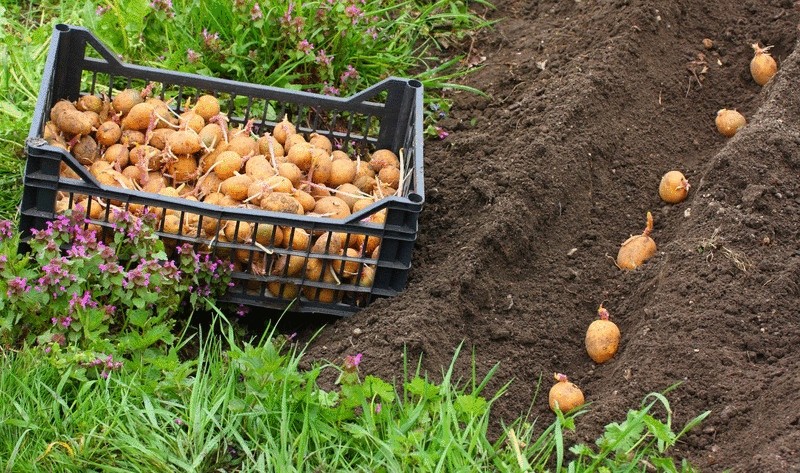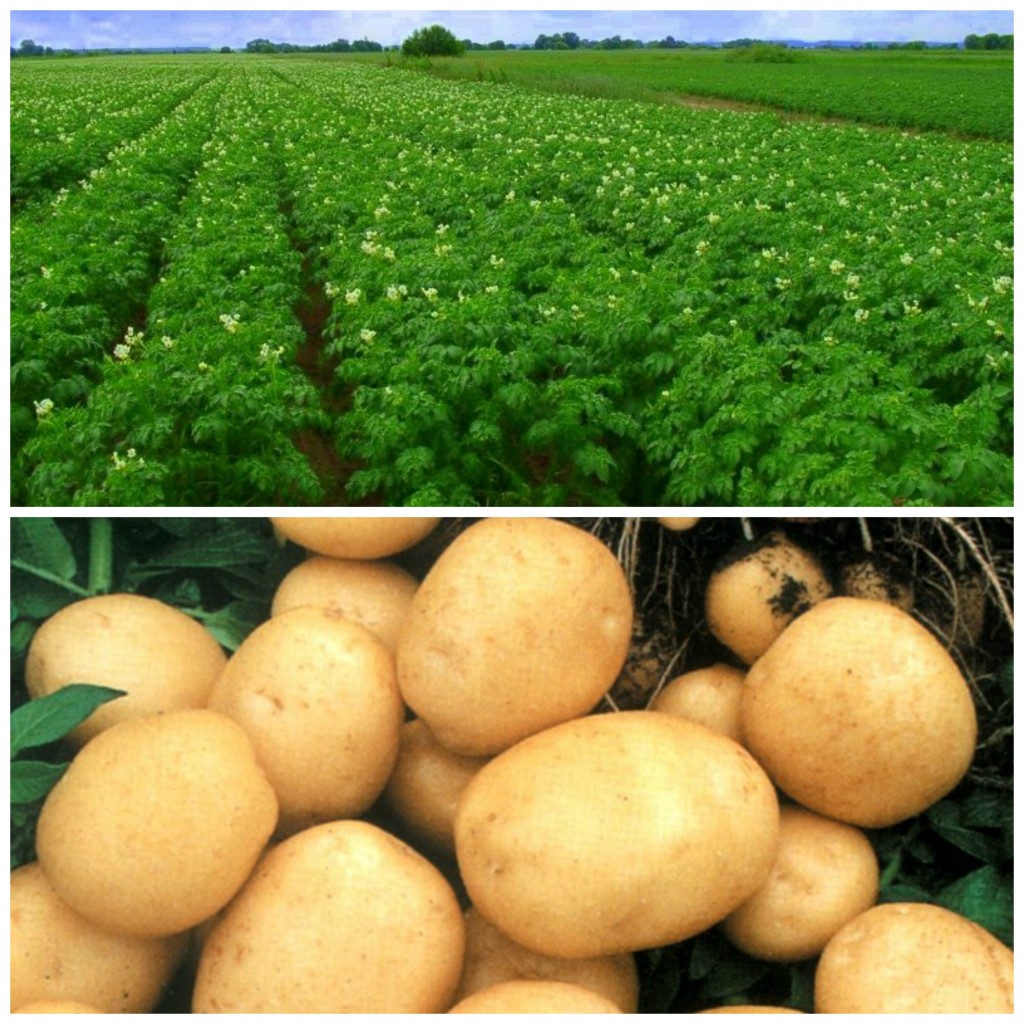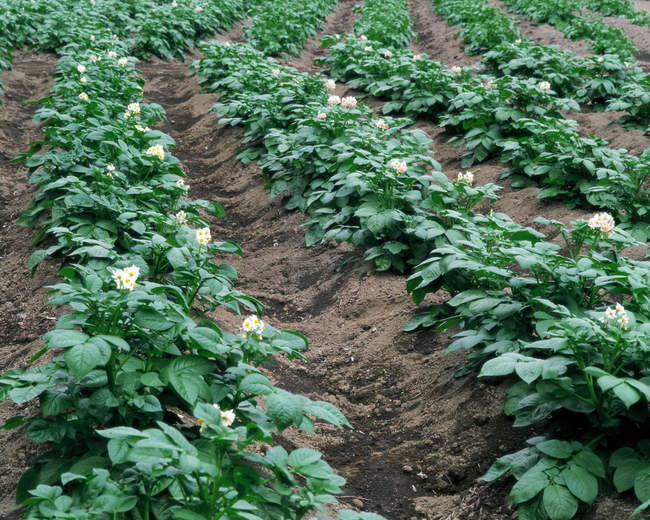How to properly plant potatoes from A to Z
Content
Planting material
So, we have already decided that experience in planting potatoes is accumulated by any summer resident as each crop he successfully harvested. The first important factor that directly affects the achievement of the result is the choice of a good planting material. Seeds should be harvested already when the autumn harvest is taking place. Planting material is advised to be taken from those bushes that have given the maximum amount of harvest. For the purpose of harvesting planting material, it is recommended to choose tubers, the size of which is about 4 - 5 cm, but potatoes for planting can be selected and larger. As practice shows, if you plant potatoes from large tubers, then it is able to ripen earlier and give more root crops per season.
Some gardeners traditionally prefer to plant potatoes, which must first be cut, or use sprouted eyes for these purposes. Experts say that if you cut a root crop, and then dry it in the sun and dust the cut with ash, you can achieve a good effect. But in order to pre-cut the potatoes and then dry them, the weather must be warm. In the event that after planting the weather is cold and with precipitation, it may very well turn out that the potatoes that you decided to cut beforehand in order to get planting material will simply rot. But experienced gardeners still prefer to cut the tubers, because most often when planting a crop, they still germinate and give a good harvest. In any case, it is up to you to cut or not cut the tubers before planting.
Tubers should be removed from storage in mid-March, dipped in a potassium permanganate solution and placed in boxes for germination. They need to be kept at a temperature of 20 - 22 degrees, and after a couple of weeks, transferred to a colder place. Tubers need to be moistened, turned over and sprayed - with water, ash solution and mineral fertilizers, which alternate.
Video "Rational planting of potatoes"
Soil preparation and site
To plant potatoes, the soil also begins to be prepared in the fall. The tops of the dug root crops should be removed from the site. To prevent pests from overwintering in it, it is recommended to burn the tops. The soil must be dug up and plowed, while the depth should be on the bayonet of the shovel. Large clods do not need to be crushed to allow the earth to breathe. If the soil has not been fertilized for a long time, they use the well-known cow dung - it is humus. Phosphorus-potassium fertilizers have proven themselves well, which must be scattered over the site before digging it up. If the site is located in a lowland, it is necessary to make drainage grooves so that water leaves the garden.
With the onset of spring, when the soil warms up well, the entire area should be dug up again. Only this time, one should not neglect the crushing of clods of earth, as well as the removal of weed roots.Fertilizers on the surface should be dug in. After that, you need to level the soil so that it does not have time to dry out. The soil requires the presence of sand, then the root crop will grow and develop better. The beds should be arranged in a north-south direction and the seeds should not be lowered deeper than 10 cm.
When to plant
When choosing potato varieties for your personal plot, pay attention to the timing of their planting and ripening. Some gardeners believe that vegetable crops should be planted as early as possible, others insist on later dates. Even experts are not able to name a specific landing date, since the recommended dates vary depending on the area. But even in the same region, potatoes may not be planted on the same day in different years - much depends on weather conditions.
Folk omens suggest gardeners to plant a vegetable crop when buds appear and bloom on a birch, and leaves on poplars. You can also use the "three dozen" rule - according to it, you can plant potatoes in the middle lane when the temperature for a couple of days will stay at around 10 degrees at night, the soil at a site at a depth of 10 cm will be warmed up to 10 degrees. Planting dates also depend on the variety of potatoes - early ripening varieties are distinguished (the crop can be harvested after 50 - 65 days), mid-ripening (the harvest should be expected in 80 - 95 days), late-ripening (you will be pleased with the harvest only after 110 or more days).
According to the lunar calendar, the landing can be planned during the third lunar phase, that is, within 3 to 5 days after the onset of the full moon.
Landing technique
Planting potatoes correctly today is not just a process of burying roots in prepared soil. The planting depth of potatoes depends on the type of soil, moisture, quality of the planting material. The general requirements for planting are as follows - to mark the beds, markings should be made using a rake with three teeth located after 80 cm - this will be the distance between the beds. The spacing between the bushes can be measured with the length of the legs. Potatoes should be planted half a palm deep. About 20 - 25 kg are planted per 100 meters of medium-sized square tubers.
When shoots appear, they need to be sprinkled with earth three times as they grow - in order to get a powerful root system. There are three main options - smooth landing, in ridges and in trenches.
Smooth or traditional planting "under a shovel" involves raising a layer of soil with a shovel, laying tubers, which you previously decided to cut or not, into the prepared hole, and then cover them with a layer of earth on top. This planting technique is well suited if the site is flat, the water does not stagnate on it, the sun's rays warm up and illuminate the ground perfectly, and you have helpers - it is quite difficult to plant in this way alone.
With a high level of groundwater and in waterlogged areas, it is better to choose planting in ridges. With the help of a hoe or a tractor, ridges are made about 15 cm high at a distance of 70 cm, into which the tubers are then planted. You can also plant potatoes in trenches - in areas with hot climates, on sandy and sandy loam soils. It's like the ridges on the contrary - they need to be deepened into the soil in order to protect them from drying out and overheating.
Unusual methods of planting potatoes include technique under the straw - when the tubers are laid out on the site and covered with straw, and as the tops grow, they are added to the rows and spud like in traditional planting; the technique of planting in boxes on organic matter - they build ridge-containers in which tubers are placed in organic raw materials and planted; planting in barrels - fertile soil is placed in a container with drainage holes with a layer of about 15 - 20 cm, potatoes are laid and sprinkled with soil.
Video "Methods for planting potatoes"
From the video you will learn which methods are most common when planting potatoes, and which ones bring the most beneficial results.




